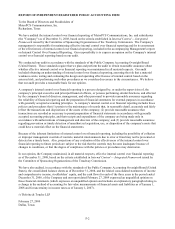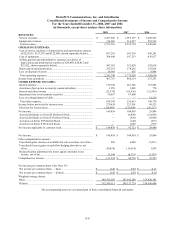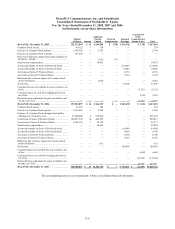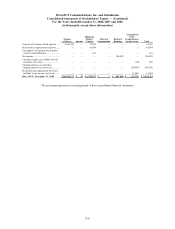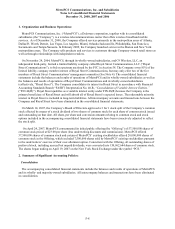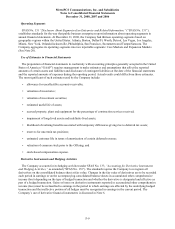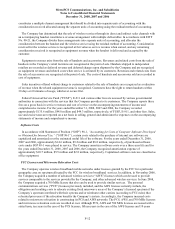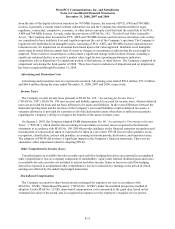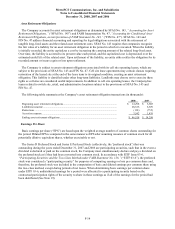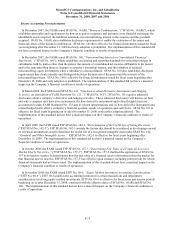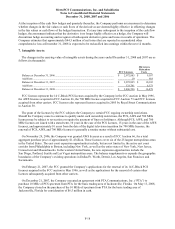Metro PCS 2008 Annual Report Download - page 111
Download and view the complete annual report
Please find page 111 of the 2008 Metro PCS annual report below. You can navigate through the pages in the report by either clicking on the pages listed below, or by using the keyword search tool below to find specific information within the annual report.MetroPCS Communications, Inc. and Subsidiaries
Notes to Consolidated Financial Statements
December 31, 2008, 2007 and 2006
F-9
Operating Segments
SFAS No. 131 “Disclosure About Segments of an Enterprise and Related Information,” (“SFAS No. 131”),
establishes standards for the way that public business enterprises report information about operating segments in
annual financial statements. At December 31, 2008, the Company had thirteen operating segments based on
geographic regions within the United States: Atlanta, Boston, Dallas/Ft. Worth, Detroit, Las Vegas, Los Angeles,
Miami, New York, Orlando/Jacksonville, Philadelphia, San Francisco, Sacramento and Tampa/Sarasota. The
Company aggregates its operating segments into two reportable segments: Core Markets and Expansion Markets
(See Note 20).
Use of Estimates in Financial Statements
The preparation of financial statements in conformity with accounting principles generally accepted in the United
States of America (“GAAP”) requires management to make estimates and assumptions that affect the reported
amounts of certain assets and liabilities and disclosure of contingent liabilities at the date of the financial statements
and the reported amounts of expenses during the reporting period. Actual results could differ from those estimates.
The most significant of such estimates used by the Company include:
• allowance for uncollectible accounts receivable;
• valuation of inventories;
• valuation of investment securities;
• estimated useful life of assets;
• accrued property, plant and equipment for the percentage of construction services received;
• impairment of long-lived assets and indefinite-lived assets;
• likelihood of realizing benefits associated with temporary differences giving rise to deferred tax assets;
• reserves for uncertain tax positions;
• estimated customer life in terms of amortization of certain deferred revenue;
• valuation of common stock prior to the Offering; and
• stock-based compensation expense.
Derivative Instruments and Hedging Activities
The Company accounts for its hedging activities under SFAS No. 133, “Accounting for Derivative Instruments
and Hedging Activities,” as amended (“SFAS No. 133”). The standard requires the Company to recognize all
derivatives on the consolidated balance sheet at fair value. Changes in the fair value of derivatives are to be recorded
each period in earnings or on the accompanying consolidated balance sheets in accumulated other comprehensive
income (loss) depending on the type of hedged transaction and whether the derivative is designated and effective as
part of a hedged transaction. Gains or losses on derivative instruments reported in accumulated other comprehensive
income (loss) must be reclassified to earnings in the period in which earnings are affected by the underlying hedged
transaction and the ineffective portion of all hedges must be recognized in earnings in the current period. The
Company’s use of derivative financial instruments is discussed in Note 6.





